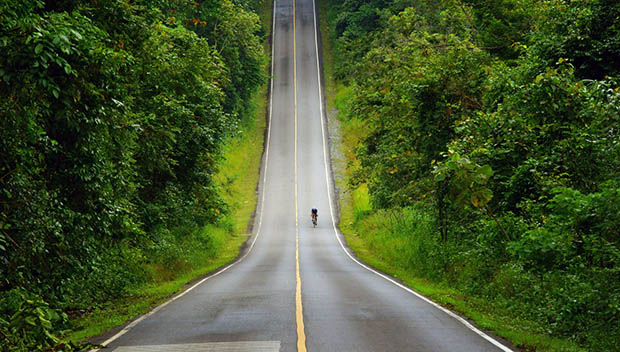
Segments, in the athletic sense, are defined as stretches of road (or trail, gravel, etc.) that are tracked against an athlete's own times and paces, as well as against all other athletes who have completed the same stretch. This metric can be found on several different apps, but the concept was made popular by Strava and the cycling community.
As many cyclists are currently without group rides and races, it can be a struggle to find motivation, especially when it comes to intensity. Segments have been an ideal way for many to get just that—a defined intensity in their typical training ride. The motivation to ride these segments hard is the competition aspect; segments allow athletes to compete against others in a friendly or serious way, and walk away with the title of queen or king of the effort. In many cycling communities, segment challenges have popped up as a way to promote training, community and competition in place of group rides and races. These segment challenges include posting a specific segment for the week and telling local riders to go for it! Rankings for that time span are displayed for the local clubs/teams to showcase bragging rights.
To go for the crown, there are several strategies.
Do your research by looking up the segment and knowing the twists, turns, elevation, previous times, current leaderboard, etc. These timed stretches have defined start and finish points. Get familiar with these points by using the satellite view on a map or by doing a practice run. It might seem like a good idea to go easy until the 'start line', but try ramping up the pace leading into the segment; the shorter the segment, the longer and faster you'll want this lead-in to be.
Completing the challenge on a day where the wind is at your back, assisting you to go faster and work less, is always a good plan to nab a faster time. These are typically designed to be solo attempts, but rules are meant to be broken. Working in a small group or with another rider to lead you out will increase your chances of a faster result—it's all for fun in the end. For uphill segments, dropping weight from your bike will also assist in a better placement. For flatter segments, getting as aero as possible will be a big help.
While these segment challenges are a great way to inspire you to go hard and continue competing with local cyclists, there is a downside: safety. Competitive environments typically drive athletes to take greater risks, and these challenges are no different. You might push harder than you should, go out in bad weather, leave fuel and hydration behind to save weight or employ other extreme tactics that might not serve you well.
In group rides you have a crowd of cyclists visible to traffic, which creates a safer ride. In races you have traffic marshals and closed roads protecting you. In a solo segment challenge, you have none of these things. Putting your head down to go all out on a piece of road or trail can leave you at risk of missing a traffic light, pothole, turn, car or other obstacle and can have serious consequences. It is crucial to remember that competing in a segment challenge does not grant you immunity from rules of the road.
If segment challenges inspire you to train hard, make sure to know your limits, pick safe segments to compete on and remember that a virtual crown for a local challenge is all about having fun!
READ THIS NEXT: 21 Motivational Cycling Quotes to Keep You Inspired


